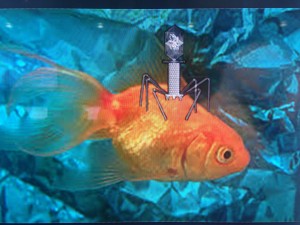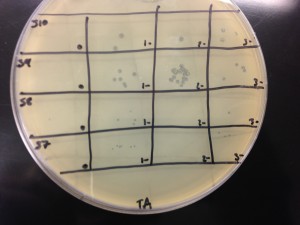Today, everything came to an end. It was the final day of lab and we finished up and made final modifications on everything that we have spent the last semester working so diligently on. Not all of us received the results we anticipated at the beginning but I don’t think any of us regret going through this process. We have learned so much over the course of the past sixteen weeks and have been able to do bona fide research, something that the vast majority of college freshman will never get the opportunity to participate in. This past lab I archived my phage, the final step in this long process, and while I am glad that I have achieved my goal of making it to the end of the phage-finding and isolating process, I can’t help but feel a bit sad that it is over. This has been an incredible opportunity and I am so grateful to have been able to spend it with each and every one of you. I have learned an immense number of things that will help me to become a better student and scientist over the course of this semester including but not limited to, keeping a lab book, creating an EM grid, running restriction digests, creating serial dilutions, and yes, even working with disgusting smelling Arthrobacter plates. All these skills have changed me for the better, but I would never have developed them were it not for this experience.
Looking back over my lab book, it is amazing how much progress was made. The beginning weeks of the semester, nothing was working, and by nothing I mean NOTHING. My pipetting skills, or more accurately my lack thereof, kept giving me inaccurate measurements, everything was getting contaminated due to poor aseptic technique, my first six samples all came back negative for lysogenic spots and overall, my spirits were in the dumps. It is astounding to see how practically all of this has changed in the matter of a few months. I can now use a pipette easily, aseptic technique has practically become instinctive, and I have a fully purified and isolated phage who is being sent of for sequencing. So much progress was made this semester, and I cannot wait to see what new developments the next semester has in store for me. It’s been fun everybody! See you at the final exam!





